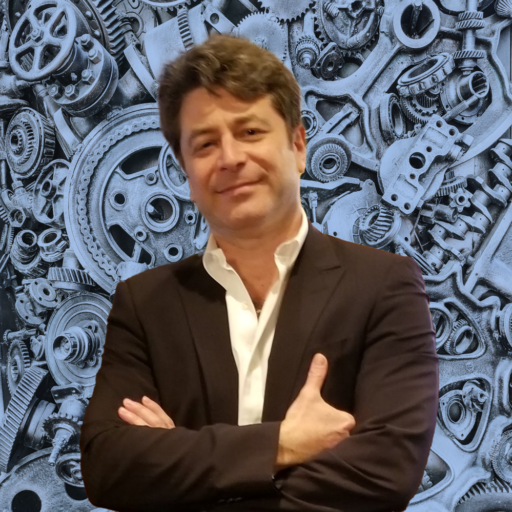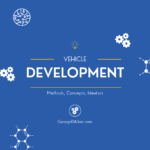New Field of View: Development of the Prerequisites #2

Development of the Field of View - Calibration and Scalability
Introduction - Field of View Concept Development - Calibration and Scalability
Continuing the discussion on the development of the Field of View requirements and their pivotal role in sensor selection, alongside the advancement of subsystem content and its alignment with overall Corporate Strategy, is essential.
Traditionally, Original Equipment Manufacturers (OEMs) are formulating a comprehensive Global strategy that intersects Vehicle variants with readily available “off the shelf” technology, while considering regional sales distribution. Moreover, this strategic approach necessitates the standardization of elements and interfaces, as well as the adaptability of technologies across diverse vehicle models and sizes.
This article delves into the establishment of a standardized set of requirements for subsystems tailored for diverse applications. Consequently, it becomes feasible to define the sensor or sensor array with predetermined coverage within the Vehicle Interior (Variants) for the Vehicle level Occupant Protection functionality. Therefore, introducing concepts of Calibration and Scalability is paramount in this context.
Systems Engineering Holistic Approach – Notes:
Furthermore, pointing out the Systems Engineering method as systematic and holistic approach to develop comprehensive set of requirements allocated to all levels of responsibility. Consequently, hypothetical “Solution Set” for the predefined Subsystem Content will encompass:
- Firstly, the defined range for the sensor (set) coverage
- Followed by the recommended senor (s) placement location (s)
- Aligned with the best practices for the interfaces – mechanical, electrical and logic
- Moreover, developed capability to facilitate the Data Acquisition and processing within the defined range
- Sequentially applicable to variety of Vehicle variants
- In addition, the capability to comprehend details and differences of the Vehicle environments, such as door openings, windows, seats, etc.
- Finally, the ability to employ logic related to the Vehicle environment for the decision-making in providing the Signal Outputs
- Etc.
General Review: Addressing Calibration
Continuing to capitalize on the above. Furthermore, let’s define the concept of “Calibration” applicable to the Occupant Sensing System and dependent on the Vehicle Variant. Calibration: is a necessary subsystem protocol intended to verify the functional capability of the subsystem, including the verification of the defined sensor coverage, Vehicle Interior Boundary Condition, logical and functional requirements, communication interfaces, etc.
Reiterating, the Calibration Protocol shall verify to the System and Vehicle Executive Processor Algorithm the proper physical installation and alignment of the functional sensor to the Interior and Boundary Condition. Furthermore, this verification and functional readiness is paramount at the end of the Vehicle Assembly line, as well as at each Power Initiation event.
Moreover, this capability based on the vehicle parameters and the Field of View is applicable to the specific Vehicle Variant.
General Review: Introducing Scalability
Introducing the concept of “Scalability”. Let’s assume that one (same) standardized subsystem package (Hardware and software) can be utilized on the array of vehicles with various sizes, opening configurations, windows, seats, other parameters.
Hence, the Definition of “Scalability”: The ability of the Subsystem to self-calibrate to any vehicle environment within Max / Min Field of View necessary for the defined high-level sensing functionality with standardized options and interfaces.
Generally, it would be highly advantages, if the same sensor or sensor array can potentially work for the large and for the small environment with all applicable variations. Furthermore, this makes hardware capable to function for any configuration with the same level of reliability. Moreover, it would allow to create custom packages for various standard and upscale content, by adding algorithms for each additional function, utilizing the same platform.
Comments on the Potential AI Application:
Continuing development and utilization of of AI Tools, vehicle systems engineers can effectively address the complex prerequisites inherent in advanced system development. Furthermore, embracing AI-driven solutions fosters innovation, accelerates development cycles, and ultimately enhances the safety and performance of vehicles.
Referencing Virtual Development: https://georgedallen.com/virtual-development-embracing-tomorrow-today/
Referencing “Virtualization” definition: https://en.wikipedia.org/wiki/Virtualization
Conclusion: Field of View – Development of Requirements to Capitalize in the Total Business Case
In conclusion, the System Engineering method allows to simultaneously strategize each element of the System’s development as a contributor to the Total Business Case. Moreover, each engineering task addresses the final set of the requirements and their allocations. Consequently, this strategy distributes the results of the development steps to the key stake holders as soon as they are available. Furthermore, advanced development of the requirements and planning allows streamlining parallel development of all elements of assembly and applies to all regions of production and sales.
Additionally, the development of the Logic related to the Calibration Protocol is independent of the Hardware and can be developed in parallel. Consequently, the development of functional algorithms is following the Calibration Protocol and independent as well. Hence, this brings the opportunity for the utilization of the simulation capabilities for this complex development.
References:
- The Systems Engineering Method: https://georgedallen.com/navigating-chaos-systems-engineering-in-vehicle-occupant-sensing/
- Develop System Requirements: https://georgedallen.com/new-system-function-development-of-clear-requirements/
- Develop Vehicle Level Requirement: https://georgedallen.com/development-of-clear-requirements-new-vehicle-function/
- Development of Prerequisites: https://georgedallen.com/development-of-the-prerequisites-new-passive-safety-features/
- Development of Usecases: https://georgedallen.com/usecases-development-of-the-prerequisites-new-databases/
- Utilization of the Usecase: https://georgedallen.com/utilization-of-the-usecase-deep-dive-new-technology-development/
- Passive Safety Features: https://georgedallen.com/development-of-the-prerequisites-new-passive-safety-features/
- Field of View Development Reference: https://georgedallen.com/new-field-of-view-development-of-the-prerequisites/
About George D. Allen Consulting:
George D. Allen Consulting is a pioneering force in driving engineering excellence and innovation within the automotive industry. Led by George D. Allen, a seasoned engineering specialist with an illustrious background in occupant safety and systems development, the company is committed to revolutionizing engineering practices for businesses on the cusp of automotive technology. With a proven track record, tailored solutions, and an unwavering commitment to staying ahead of industry trends, George D. Allen Consulting partners with organizations to create a safer, smarter, and more innovative future. For more information, visit www.GeorgeDAllen.com.
Contact:
Website: www.GeorgeDAllen.com
Email: inquiry@GeorgeDAllen.com
Phone: 248-509-4188
Unlock your engineering potential today. Connect with us for a consultation.



